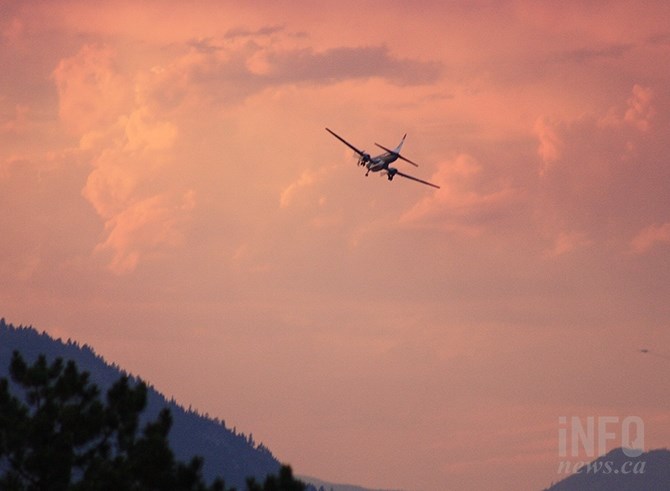
A recently released report on climate projections for the Okanagan point to a hotter climate, with increasing risk of wild fire danger. The report hopes to outline future climate patterns for valley planners.
(STEVE ARSTAD / iNFOnews.ca)
February 17, 2020 - 6:00 AM
The recent release of a report on climate projections for the Okanagan points to a much warmer future in the valley, discussing a number of implications for the coming decades that are mostly negative.
"Climate Projections for the Okanagan Similkameen" falls short of offering solutions to the many issues facing the region as climate change progresses, but is intended to provide a local understanding of potential changes in the valley in order for officials to plan for future climate events.
It concludes by calling for leaders across the Okanagan to work together and be prepared for the challenges ahead.
Regional District of Okanagan Similkameen Chief Executive Officer Bill Newell says the report is the result of a 16-month partnership, which includes the three Okanagan regional districts and the Pacific Climate Impacts Consortium.
“Lots of different agencies were engaged in the data gathering and the Pacific Climate Impacts Consortium provided the climate data/interpretation and wrote the report,” he said, adding there was no cost to the valley’s three regional districts except time involved.
Amongst the report’s main conclusions is a prediction of longer warm seasons and shorter cold seasons, where the news isn’t all bad.
The report talks about a few ways climate change might actually provide benefits.
Projections for the Okanagan growing season to increase from 5.5 months to 7 months by the 2060s could bring opportunities for new agricultural crops.
The number of days above 30 Celsius is expected to rise from six days per year to 22 days per year by the 2050s, with valley bottom summers considerably warmer as a rule.
Fewer colder nights and an increase in daytime temperatures could reduce the air pollution impacts from use of wood burning stoves, and put less pressure on vulnerable populations seeking to avoid the cold weather during winter months.
The warmer weather may make driving safer during winter travel, in addition to increasing economic activity if it is easier to get around.
Ski resorts may benefit from longer summers by becoming all-season resorts, and warmer winters may encourage snowbirds to stay at home.
But negative effects are many, including increased chance of flooding in spring, drought in summer, increased risk of wildfires and buildings that aren’t designed to handle the changing temperatures.
More can be learned about the report by attending the public launch of the Climate Projections Report at the UBCO Commons Lecture Hall on Feb. 26 at 6:30 p.m.
Tickets for the launch can be purchased online here.
To contact a reporter for this story, email Steve Arstad or call 250-488-3065 or email the editor. You can also submit photos, videos or news tips to tips@infonews.ca and be entered to win a monthly prize draw.
We welcome your comments and opinions on our stories but play nice. We won't censor or delete comments unless they contain off-topic statements or links, unnecessary vulgarity, false facts, spam or obviously fake profiles. If you have any concerns about what you see in comments, email the editor in the link above.
News from © iNFOnews, 2020